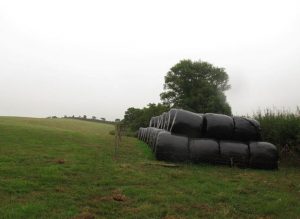Going the extra mile in covering and sealing freshly harvested forage can save producers a lot of dry matter (DM), nutrients and, of course, money. Taking the extra steps in covering your silage will improve the hygienic quality of your feed. That way, there will be fewer health issues and digestive upsets. If you’re a producer and you make an effort in covering your silage, it won’t seem like an extra step at all since you’re used to it. With that said, here are five key steps towards successfully covering your silage using silage covers and get maximum savings on your investment.
Cover your silage right after harvesting: after you chop and file your fresh silages, you should look towards covering them as soon as possible. This move will help create and establish the anaerobic environment that’s required for the silage to develop into healthy and nutritious forage.
 Don’t skimp on the thickness or quality of your silage covers: some people tend to buy the cheapest plastic cover they can get, which is a wrong move since low-quality covers will also give a mediocre performance. Instead, you should look towards choosing the most premium covers in the market. The extra cost will be returned several times as much in the form of high dry matter recovery and silage quality.
Don’t skimp on the thickness or quality of your silage covers: some people tend to buy the cheapest plastic cover they can get, which is a wrong move since low-quality covers will also give a mediocre performance. Instead, you should look towards choosing the most premium covers in the market. The extra cost will be returned several times as much in the form of high dry matter recovery and silage quality.
Choose a plastic cover that’s at least five millimetres thick and has a dual layer feature — black inner and white outer — to prevent deterioration. Also, consider using silage film with an increased oxygen barrier. Visit this site to look for the best silage covers available in the market right now.
Cover the whole slope around the drive-over pile or in front of the bunker with silage cover when the filling is complete. Doing so will prevent spoilage in these harder-to-pack areas.
Make sure there’s enough weight along the edges to make sure that plastic stays in place and prevent air from infiltrating inside. Overlap the seams with two different sheets of plastic by at least five feet. Weigh down the whole cover with either gravel bags or tires.
Check your covers regularly. Look for any tears or damage and repair them immediately.
Covering and sealing your silage effectively using high-quality silage covers will prevent oxygen ingress, which is the primary nemesis of producing quality silages. For additional silage tips, visit our website or send us a message on Facebook or a tweet on Twitter.